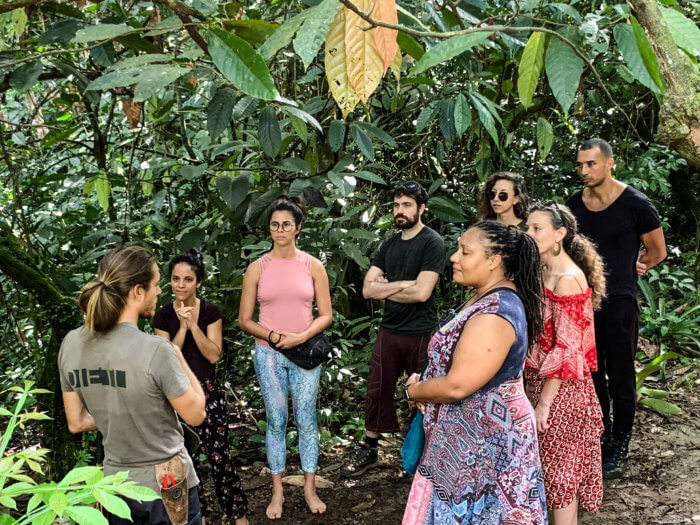We have a whole lot of fun every day at the farm, and our souls and stomachs celebrate the delicious productivity of our ecosystem. We joke that this land is so fertile that if you drop your car keys a new car might grow. But like farmers everywhere on the planet, we’ve had to deal with crop failures, surprising droughts, and even disappearing soil organic matter. Twenty-five years of organic operation – many of those also being Demeter biodynamic – haven’t exempted us from global farming challenges. Imagine our shock when we did soil organic matter testing about five years back and discovered that our fields were in worse shape than our pastures, which in turn were in worse shape than the margins of our farm that nature was reclaiming.
There’s a big lesson in this. The areas of our farm that nature was reclaiming, which were returning to a forested condition, were in the best condition. What’s the takeaway?
Consider where we are on the planet: 10º North of the Equator on the Panamanian land bridge, in the evergreen volcanic land of the humid Neotropical rainforest. Our land bridge has been rainforest for eons, and that’s the “default” condition if our land is left undisturbed. In other areas of the world, that “default” status might be grasslands, salt marshes, or even deserts. For us, on the Caribbean slope of the continental divide, everything here wants to be a rainforest.
And in our distant past, we fought that. Yes, we were organic and biodynamic, but we tried to force the land to behave like the “arable” land of the temperate world. We fought the natural complexity of our biodiverse rainforest and, like the term “arable” suggests, we put the land to the plow and imposed monoculture. Sure, we allowed the land to recover in long periods of fallow, but every few years we tilled the soil.

Carlos Arias with our oxen, once used for plowing

Our turmeric fields once looked like this
And then about ten years ago we discovered regenerative agriculture, which recently led us to our friends Scott Gallant and Sam Kenworthy of Porvenir Design. http://www.porvenirdesign.com They’ve been helping advance our practice of permaculture and thereby accelerate our land’s return to its “default” condition as rainforest. For more information about our work with regenerative agriculture, please check out our earlier blog at https://fincalunanuevalodge.com/regenerate-now/
Scott recently led a farm tour that introduced some of our staff and guests to our always-evolving farming vision. It began in our cacao plantation, and Scott explained that where we ignored the cacao trees the area reverted to secondary rainforest.

He confessed to being lazy, and he didn’t want to fight against the natural tendency of the land to be a rainforest. Why not, as he and permaculture advocates challenge, use that natural tendency – use the unbounded force of Nature – as our ally?
So instead of tilling, let plant freedom ring! Let the complexity of rainforests be our guide, and instead of monoculture and bare earth, farm with many species and permanent cover. What’s that look like?



This might not look like the plowed and monotonous farms of our collective cultural memory, but this is how a rainforest produces food. This is how lazy farmers (like Scott) want to work – with love, respect, and using the natural creative intelligence of our ecosystem.
And when you farm like a rainforest, you get to eat like a happy member of a healthy ecosystem. You get to eat greens that are perennial and full of flavor and nourishment.

You get to eat fruits in season, exploding with flavor.


Hey, in our world you even get to wear the colors of the rainforest, like this gang painted with annatto.

And by farming with nature, we can quickly revive and regenerate depleted soils. This will manifest in different ways depending on local conditions, but regenerative farmers around the world are now rapidly rebuilding soil, sequestering carbon dioxide, and creating food abundance.
And that’s something to celebrate with us here at Finca Luna Nueva!


